When you are off exploring the great outdoors you may be lucky enough to hear a beautiful tune coming from a songbird. Earth Rangers has been working to protect one of these songbirds, the Wood thrush, but there are other musical birds that also need protection, like the Eastern loggerhead shrike (aka the ‘butcher bird’).
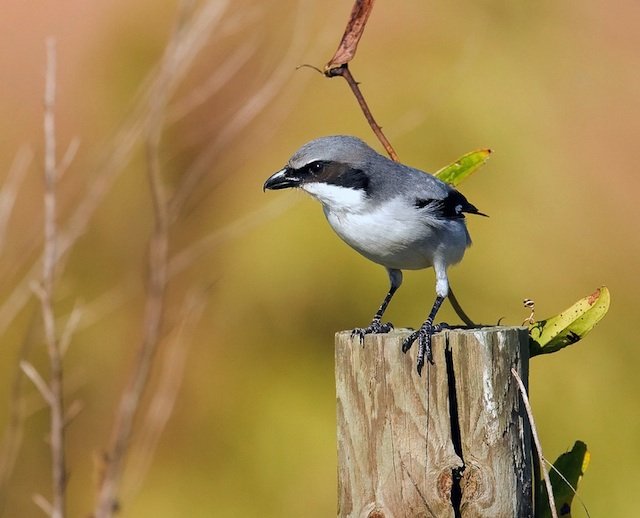
These migratory grassland songbirds have such a scary nickname, thanks to their aggressive hunting technique. Eastern loggerhead shrikes impale their dead prey on branches, thorns, or barbed wire before eating them!
All about the Eastern loggerhead shrike
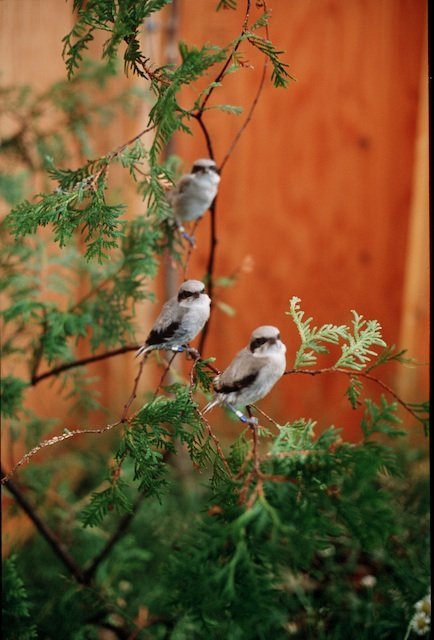
- Size: 45 g with a big head for their body, hence the name ‘loggerhead’
- Colour: Grey head, black facial mask, and black and white throat and underside. Black wings and tail with a few white patches
- Diet: Mice, small birds, snakes, frogs and insects
- Habitat: North American grasslands and other open habitats
- Status: Critically Endangered in Canada (COSEWIC 2000)
- Behaviour: Since songbirds do not have talons to kill and eat their prey, shrikes use their strong, raptor-like, hooked beak to kill their prey and then impale the dead prey on branches, thorns, or barbed wire to make it easier to eat the meat.
- Nickname: ‘butcher bird’ because males sometimes store their impaled prey in cool places called “larders” to attract females and also to make sure they have enough food to feed their nestlings.
By 1997 Eastern loggerhead shrike populations had dropped to just 18 known breeding pairs in Canada. The decline could be caused by fragmentation and loss of their grassland habitat, pesticide use, severe weather, West Nile Virus, and being hit by cars. We were at risk of losing the Eastern loggerhead shrike forever so scientists at Wildlife Preservation Canada, working with the Shrike Recovery Team, stepped in and started a captive breeding and reintroduction program to save this incredible songbird.
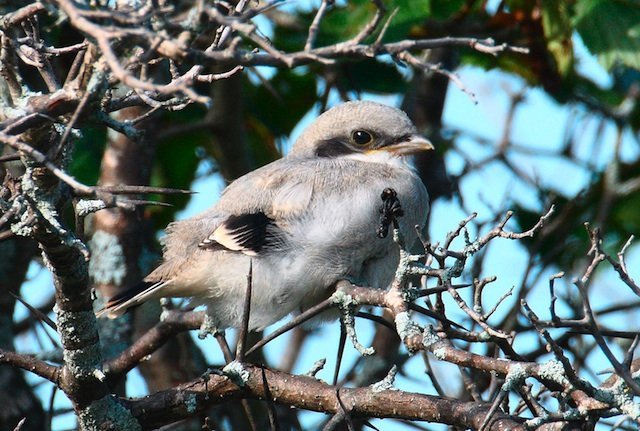
Breeding butcher birds
In 1997 and 1998 scientists collected 43 nestlings from the nests of wild breeding pairs in Ontario to start a captive breeding population as a safety net against their extinction in the wild. Since these captive-bred birds were so important for saving their species they received the best care possible. They were provided with daily food, regular checkups and a home similar to their habitat in the wild. By 2001 the captive population had grown to 100 breeding adults, and scientists decided it was time to release captive-raised juveniles back into the wild. This first generation of captive-bred nestlings received care from their parents and specially trained biologists in large outdoor field aviaries.
To prepare these birds to be released into the wild they are given live food, such as mice, and perches and branches inside their enclosures to practice impaling their prey. For the next 11 years, each summer as many as 100 or more juvenile shrikes have been released into their native habitats at 54-77 days old. All this care and attention has paid off; by 2012, 663 juvenile Eastern loggerhead shrikes had been released into the wild!
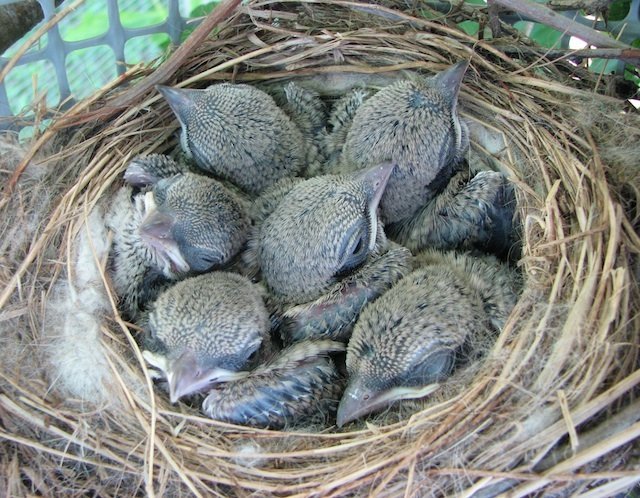
What happens to the young birds after release?
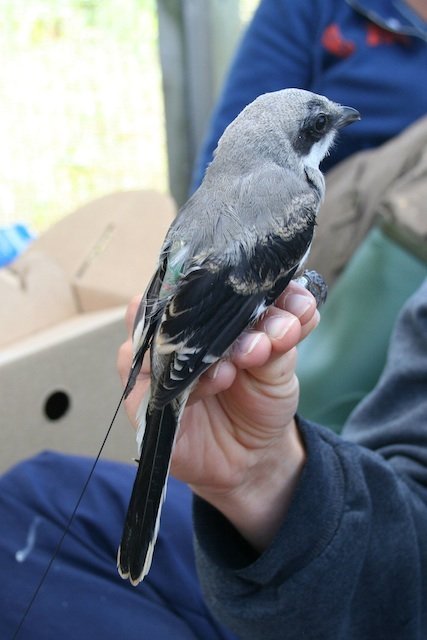
Once released, scientists wanted to make sure these Eastern loggerhead shrikes went on to live happy songbird lives so they decided to follow them. It’s tough trying to keep up with a flying songbird, so, in 2007 and 2008, scientists used radio telemetry to follow them. They discovered that after being released these songbirds traveled an average of 4.2 km from their outdoor enclosures to local grasslands and fields. Around 75% of the released birds survived through the summer and went on to migrate south for the winter. And, many of released shrikes come home! Scientists found that 34 of the released shrikes have returned to Ontario, paired with wild shrikes, and laid their own eggs! These birds and the amazing scientists that work with them have helped make this conservation success story possible as the wild population of Eastern loggerhead shrikes has been saved from extinction, so far.
Conservation power!
About 10,000 species of birds have been described, with 12% facing the threat of extinction. Of the 699 re-introduction programs for birds, migratory songbird re-introductions are the most rare, which is something we may have to change as increasingly these amazing birds are in need of our help. Conservationists who work in this field know how important these projects are; just ask Earth Rangers Science Advisor, Dr. Scott: “I have been doing research on birds for nearly 20 years and have seen how critically important hands-on conservation action programs like species re-introductions are for us to bring back the wild.”
Take part in important conservation projects across Canada by starting your own
Bring Back the Wild campaign!
References:


I have a love bird in my room
I loved the pictures.
Song birds are cute
I want to do a BBTW campaign,but I don’t know how
I love all animals!!!!!!!